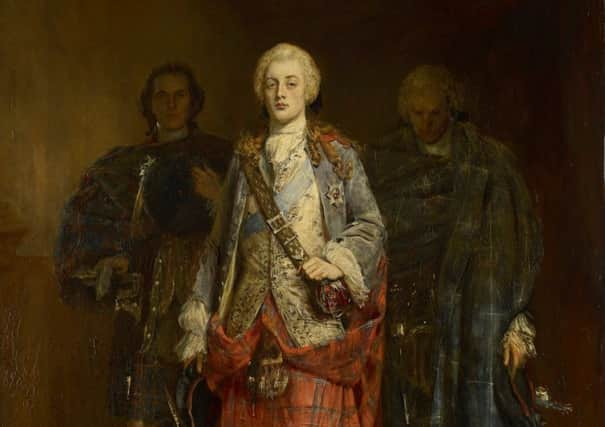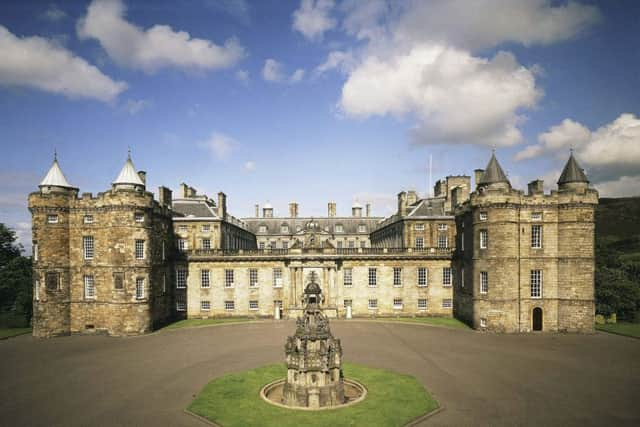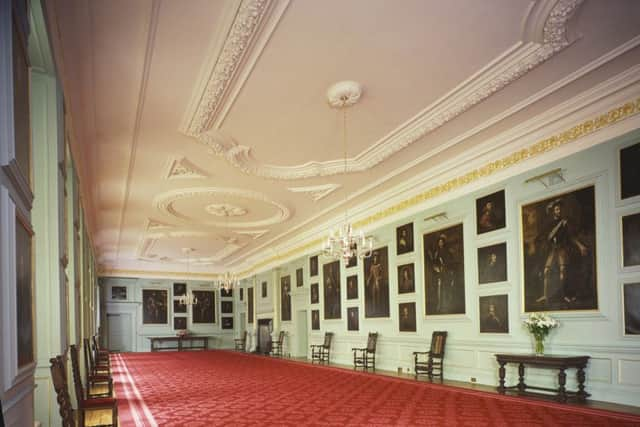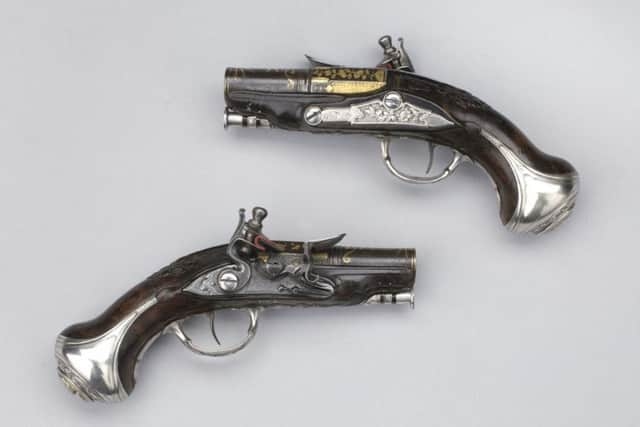When the Jacobites took over the Palace of Holyroodhouse


Around 20,000 people lined the streets of the capital for a glimpse of the Prince, cheering as he rode past the foot of Salisbury Crags and through the south entrance of the Palace of Holyroodhouse.
As Charles Edward Stuart approached the main door, dressed in a tartan short coat and a blue bonnet, his trusted aide, the Earl of Keith, raised his sword in gesture. The prince was now taking his place in the Royal Palace - and indeed the palace of his ancestors.
Advertisement
Hide AdAdvertisement
Hide Ad

It was here, on September 17 1745, that Bonnie Prince Charlie set up court amid his ill-fated campaign to restore his family line to the British throne. On that day, his father was proclaimed king James VIII at Edinburgh’s Mercat Cross with the palace becoming the temporary nerve centre of the Jacobite rebellion.
Deborah Clarke, senior curator at the Palace of Holyroodhouse, described Bonnie Prince Charlie’s arrival on September 17 1745 as a huge event for Edinburgh.
She said: “People lined the streets to see the young, charismatic prince arrive at the palace surrounded by his followers. Whether you supported him or not, it was a huge event having this royal prince or this pretender, however you viewed him, come here.


“George I and II must have seemed so remote to the people of Scotland. George I was German speaking and never came to Scotland, never showed any interest in coming to Scotland and then here you have this young handsome prince arriving on the doorstep wearing Highland dress.
“And of course for Prince Charles it was hugely significant, arriving at the palace of his ancestors.”
Largely built for Charles II, the Prince’s great uncle, the palace in 1745 was relatively run down given it had yet to be used as a royal residence. Instead, it was a network of apartments occasionally used by members of the Scottish nobility.
But quickly following on from Bonnie Prince Charlie’s arrival, the Palace sprung to life and became a focal point of the city, which had been seized - save for the castle - by the Highland army.
Advertisement
Hide AdAdvertisement
Hide Ad

The palace thrummed with officers, supporters and visitors to the Royal Court as the business of Charles’ rising was administered - and his charm offensive to the people of Edinburgh got underway.
The Great Gallery became central to court life with the Prince often holding an audience of admiring Edinburgh ladies, many who came with gifts to shower the 25-year-old.
It was here that he also found himself surrounded by the gaze of his ancestors from across 2,000 years. It is not hard to imagine everything that he believed in - and everything he sought - crystallising around him in this room.
He was the first Stuart to see the collection of portrait of his family’s ruling monarchs hung in the gallery. The first depicts King Fergus of Scotland, who dates from around 330BC, and the last his grandfather, James VII.


“It is a rather interesting idea, Bonnie Prince Charlie surrounded in here surrounded by all these ancestors. This was very much a Stuart Palace,” Ms Clarke said.
The Great Gallery was used for larger meetings during Bonnie prince Charlie’s stay - as well as evening entertainments and, probably, at least one ball.
This was encapsulated in the John Pettie portrait ‘Bonnie Prince Charlie Enters the Ballroom at Holyroodhouse’ which was painted around 140 years after the Edinburgh stay in an imagining of Sir Walter Scott’s reference to a ball in his novel Waverley.
Advertisement
Hide AdAdvertisement
Hide AdThe painting, normally on show at the palace, is now the first exhibit in the Bonnie Prince Charlie and the Jacobites exhibition at the National Museum of Scotland.
While the Prince likely attended the evening entertainments because it was good public relations, he did not take part in the dancing, Ms Clarke said.
He reportedly said to one of his guests: “I like dancing and I’m very glad to see the ladies and you divert yourselves but I now have another air to dance, and until that dance is finished I’ll dance no other.”


The business of war came first and foremost during the Prince’s six-week stay.
A Council of War meeting was held every morning at 10am with figures including Lord George Murray, Lord Elcho and Lord Pitsligo in attendance. A tiny closet was used as an office, where the Prince kept his maps and papers.
Just four days after he arrived at the Palace of Holyroodhouse, the Jacobites claimed victory over the Hanoverians at the Battle of Prestonpans.
Ms Clarke said: “Apparently he rose early, he was said to be very hardworking and diligent despite this very charismatic persona and PR way of doing things.
Advertisement
Hide AdAdvertisement
Hide AdAfter dining in public at lunchtime, he then usually spent time with his troops at Duddingston in the afternoon. At night, he slept in the four poster Darnley bed, usually reserved for the Duchess of Hamilton, which was lavishly embellished and decorated with plumes of ostrich feathers.
Later, the same bed was slept in by the Duke of Cumberland as he headed south following victory at the Battle of Culloden.
Bonnie Prince Charlie and his supporters left the Palace of Holyrood House intent on marching to London. After being forced back at Derby, they entered Scotland once again and secured one more victory on Scottish soil at the Battle of Falkirk in January 1746.
The Palace of Holyroodhouse comes into play once again when the British Army troops, led by General Hawley, were billeted here around the time of the battle.
The portraits of the Stuart ancestors in the Great Gallery were to become a target for the troops.
“The Hanoverians stationed here hated anything to do with the Stuarts and they went around slashing the portraits in the Great Gallery. You can still see the marks today,” Ms Clarke said.
The Palace of Holyroodhouse is one of 26 historic locations mapped out on the new the Jacobite Trail through Scotland.
For more information and for your chance to WIN a six-night Jacobite Journey in Scotland, go to www.jacobitetrail.co.uk/win
